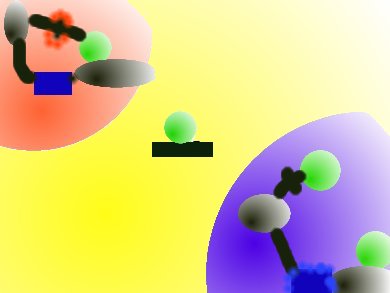Monitoring drug concentrations in the blood of patients is crucial to ensure effective treatments. Nevertheless, the methods currently used are expensive and time-consuming.
Kai Johnsson, Institute of Chemical Sciences and Engineering, Lausanne, Switzerland, and co-workers, developed LUCIDs (luciferase-based indicators of drugs), a novel class of bioluminescence sensors. These molecules are composed of three elements: the light-emitting enzyme luciferase, a drug-binding receptor, and a synthetic molecule containing a red fluorophore as well as a ligand for the drug-targeting receptor.
In the absence of the drug, the synthetic ligand binds to the receptor, thus creating a sensor conformation whereby the fluorophore is attached to the luciferase. As a result, the fluorophore perturbs the luciferase-mediated emission of blue light and induces the sensor to emit red light.
If the drug is present in the sample, however, it binds to the receptor, thereby displacing the fluorophore-bearing synthetic ligand. When this happens, the sensor acquires an open conformation whereby the fluorophore and the luciferase are far from each other. In turn, this causes a change in light emission from red to blue. By measuring the ration between red and blue light, the new sensors allowed cheap, fast, and precise measurements of drug concentrations in patients’ blood samples.
- Bioluminescent sensor proteins for point-of-care therapeutic drug monitoring,
Rudolf Griss, Alberto Schena, Luc Reymond, Luc Patiny, Dominique Werner, Christine E Tinberg, David Baker, Kai Johnsson,
Nat. Chem. Biol. 2014.
DOI: 10.1038/nchembio.1554



